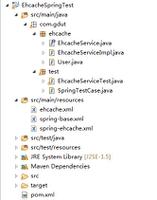flaskroute装饰器如何理解[Flask框架]

flask装饰器route实现路由功能理解
利用装饰器的方式实现了路由函数,这是一个十分简单清晰的结构,而这个功能的实现,有着很大的学习意义
@appweb.route('index',methods=['GET','POST']def static1():
return render_template('index.html')
看代码可以知道,通过appweb.route装饰了static1()函数,使其成为了路由函数
解析route装饰器源代码
def route(self,rule,**options):def decorator(f):
endpoint = options.pop('endpoints',None)
self.add_url_rule(rule,endpoint,f,**options)
return f
return decorator
Flask实例的主要路由功能就是这个route函数,而route函数源代码可以看出,是一个3层嵌套的装饰器(route函数内部还有个装饰器)
三层嵌套装饰器的语法糖规则
@appweb.route('index',methods=['GET','POST'])def static1():
return render_template('index.html')
#等于
static1 = appweb.route('index',methods=['GET','POST'])(static1)
总结
上面的route函数,实际上是返回一个decorator,这个decorator函数装饰static1函数成为路由函数
route函数的功能是提供rule参数和其他的字典键对值参数(**options)
self.add_url_rule是关键的函数,它将f参数(即static1())装饰成路由函数,最后return f
关于add_url_rule函数,从更深的源码可知,默认方法为GET,将rule(即'/index')作为网址注册进了路由,大部分的参数都在options字典中,目前我已知的参数有methods=,endpoints=,view_func=等。
以上是 flaskroute装饰器如何理解[Flask框架] 的全部内容, 来源链接: utcz.com/z/523390.html









